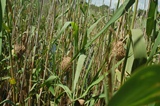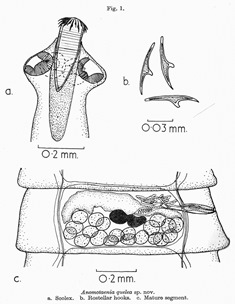Weaver news
| Ba A, Ndiaye PI, Ba CT, Miquel J. 2013. Ultrastructure of the spermatozoon of Anomotaenia quelea (Mettrick, 1961) (Cestoda, Cyclophyllidea, Dilepididae), an intestinal parasite of Quelea quelea (Aves, Ploceidae) in Senegal. Zoologischer Anzeiger 253:119-125.
Abstract. The mature spermatozoon of Anomotaenia quelea exhibits an apical cone of electron-dense material and two helicoidal crest-like bodies. The apical cone near its base is surrounded by a lucent cytoplasm and a spiraled layer of cortical microtubules. The crest-like bodies are of different lengths, spiraled and make an angle of 30-40° to the hypothetical spermatozoon axis. The axoneme is of the 9 + '1' trepaxonematan pattern and is surrounded by a periaxonemal sheath of electron-dense material. The cytoplasm contains in regions III and IV numerous electron-dense granules situated between the periaxonemal sheath and the cortical microtubules. The posterior extremity of the spermatozoon of A. quelea exhibits a nucleus and a disorganized axoneme and cortical microtubules. This type of posterior extremity of the mature spermatozoon has never been described previously in a Dilepididae. Similarly, two crest-like bodies have not been observed before in a dilepidid cestode. The specimens of this cestode were collected live from the small intestine of naturally infected Red-billed Queleas in Dakar, Senegal. The paper does not have information about quelea, but the internal parasites of weavers can affect their lives and thus it is important to also study these parasites. Literature as featured in Weaver Watch news items |











